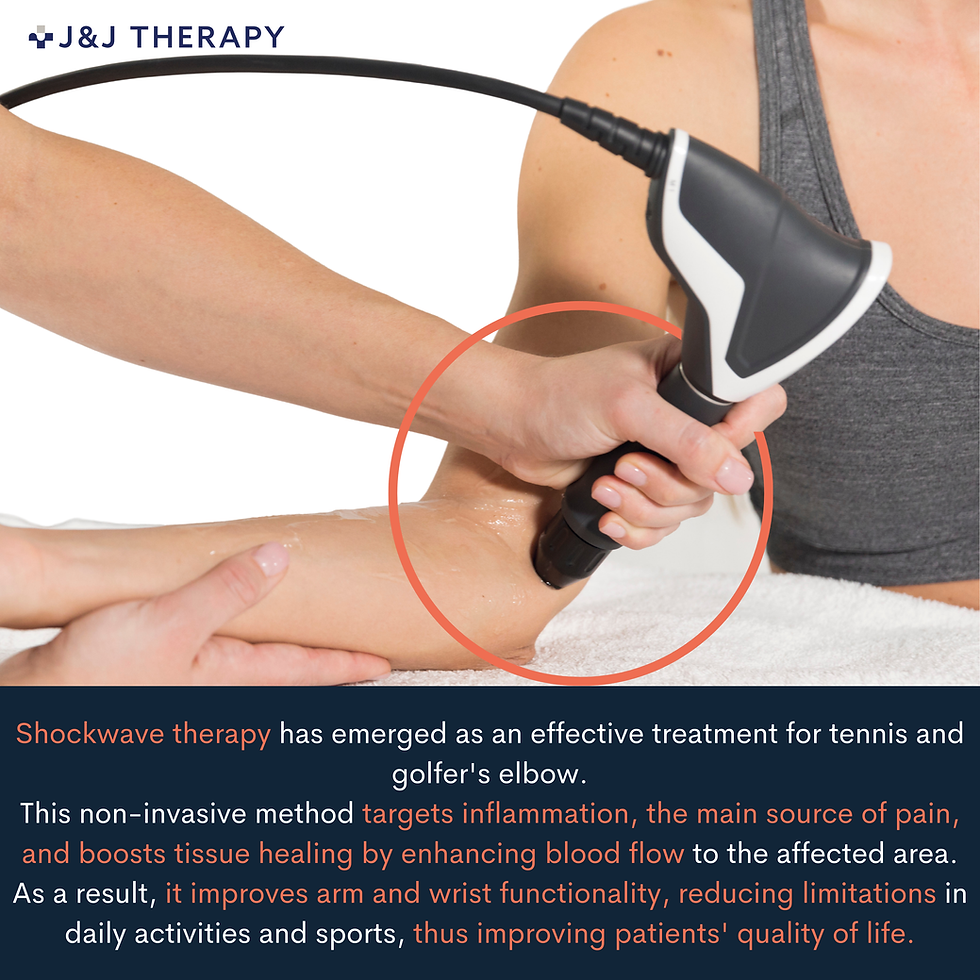Chronic elbow pain? It’s often tennis or golfer’s elbow — here’s how we fix it
- 지수 이
- Aug 14
- 2 min read








Chronic elbow pain? It’s often tennis or golfer’s elbow — here’s how we fix it
At a glance
What you feel | Where it hurts | Why it happens | First helpful step |
Achy or sharp pain when gripping, pouring, lifting or typing | Outside elbow (tennis elbow) or inside elbow (golfer’s elbow) | Overuse of wrist extensors (upward bend) or flexors (downward bend) | Reduce painful loads and book an assessment for a tendon‑safe plan |
What’s going on in the elbow?
The forearm muscles start as thin tendons at the elbow and become larger muscles in the forearm. They control how we extend or flex the wrist. When these tendons are overloaded or repeatedly strained, small tears and irritation build up.
Quick self‑check
Checklist | Yes/No |
Pain on the outside (tennis elbow) or inside (golfer’s elbow) of the elbow | |
Pain lasts > 3 months or keeps returning | |
Worse with gripping, pouring a kettle, backhand/forehand, or hammering/typing |
See a clinician urgently if you felt a sudden “pop”, have marked bruising, numbness/tingling into the hand, fever, or you cannot grip—these may suggest a different problem.
Tennis elbow vs Golfer’s elbow (simple guide)
Condition | Overloaded tissue | Typical trigger moves | Pain spot |
Tennis elbow (lateral epicondylitis) | Wrist extensor tendon | Lifting with palm down, backhand, typing with stiff wrist | Outer bony point |
Golfer’s elbow (medial epicondylitis) | Wrist flexor tendon | Pulling, forehand, heavy gripping/throwing | Inner bony point |
Why recovery can drag on
Tendons have limited blood supply. Once inflamed, pain can spike with wrist use and healing may stall—turning an acute strain into chronic elbow pain.
Our treatment plan (clear phases)
Phase & goal | What we use | What it does |
Calm inflammation | Shockwave therapy, Ultrasound therapy | Reduces tendon irritability, breaks adhesions, boosts local blood flow |
Ease pain | Electrical therapy (TENS/EMS) | Short‑term analgesia to let you sleep and move |
Release overload | Therapeutic massage to forearm, triceps, cervical/shoulder | Frees tight tissue and reduces tendon compression |
Reload safely | Corrective exercise education (isometrics → slow heavy loading), grip & posture coaching | Restores tendon capacity and prevents recurrence |
If swelling present | Lymphatic massage | Aids fluid movement and comfort |
What a session at J&J Therapy looks like
Step | What happens | Your takeaway |
1. Consult & assess | Pinpoint the involved tendon, aggravating tasks and grip load | Clear diagnosis and goals |
2. Hands‑on & device care | Corrective/therapeutic massage + shockwave where indicated | Pain down, movement up |
3. Your mini programme | 3–5‑minute home routine, work‑station & sport tweaks | Confidence and control between visits |
Home tips until you visit
Switch painful grips to neutral wrist, use two hands for heavier items
Isometric holds: pain‑free wrist extension/flexion, 5×10s, 2–3×/day
Ice 10–15 mins after heavy use during the first 48–72 hrs of a flare; use gentle heat later for stiffness
Gradually re‑load with slow, controlled reps—no sudden spikes
Ready to use your arm without wincing?
Most clients feel meaningful relief within 3–6 sessions and leave with a simple plan to stop it coming back. Book your assessment at J&J Therapy and get back to work, gym and sport with confidence.



Comments